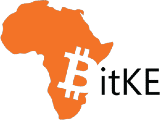Yuga Labs, a popular NFTs creator, has been in the headlines after announcing that they made over $16 million (735.7 bitcoin) from the auction of 300 bitcoin NFTs in the TwelveFold collection.
TwelveFold, whose auction is now complete, is described as a limited edition, experimental collection of 300 generative art pieces inscribed onto Satoshis on the Bitcoin blockchain.
“These pieces represent a complete art project and will not have other utility or interact with or be related to any previous, ongoing, or future Ethereum-based Yuga projects.” – TwelveFold.
Ordinal inscriptions, sometimes referred to as just inscriptions, or just ordinals, are NFTs you can mint directly onto the Bitcoin blockchain and that live on the network. An inscription is created when a file, such as an art image, is written into (inscribed into) units of Bitcoin, called Satoshis.
Satoshis are the smallest individually identifiable units of Bitcoin (100 million Satoshis equals one Bitcoin). Inscriptions, also called digital artifacts, are native to the Bitcoin blockchain and are made possible through the Ordinal Theory Protocol.
Ordinals
The concept of Bitcoin Ordinals was first proposed in a whitepaper by a team of researchers led by Tadge Dryja in 2019. The idea is to create a new type of transaction that allows users to encode arbitrary data into the Bitcoin blockchain, including metadata related to NFTs. This metadata can include information such as ownership provenance and other attributes that are important for NFTs.
However, inscribing bitcoin only became possible thanks to the Taproot upgrade which launched on the Bitcoin network on November 2021 while the Bitcoin Ordinals protocol was only launched in January 2023 by Casey Rodarmor.
Bitcoin Ordinals are a way of encoding arbitrary data into Bitcoin transactions, making it possible to store metadata related to NFTs on the Bitcoin blockchain. This metadata includes information such as ownership, provenance, and other attributes that are important for NFTs.
The Taproot upgrade makes Ordinals possible by:
- Reducing the costs of data storage on the Bitcoin blockchain by 75%
- Addressing the scability problem by reducing the amount of data needed to process each transaction
- The introduction of the ‘MAST’ transaction enables the creation of more complex and flexible smart contracts
- Improving the privacy of the network by allow users to hide the details of their transactions from the public
In order to inscribe an Ordinal however, users are required to run a full Bitcoin node.
Ordinal inscriptions are seen as an improvement to Ethereum NFTs since all metadata is stored off-chain on Ethereum often on the Interplanetary File System (IPFS) – a decentralized file storage, sort of like a blockchain hard drive.
Ordinals essentially enable you to inscribe ‘complete’ data on-chain, hence the term digital artifacts, according to Rodarmor.
The emergence of Bitcoin Ordinals has caused a significant surge in the usage, fees, and storage space of the Bitcoin Network, as depicted in the chart above. It also represents a major breakthrough for the Bitcoin application tier and can shift the narrative from being solely a ‘store of value’ to more practical use cases.
If you are interested in buying, selling or trading ordinals, follow these steps:
- Go to ordinalswallet.com
- Click on ‘Create Wallet’
- Take a backup of the recovery phrase for your wallet
- Set up a password for wallet access
- Use the address of the Ordinals Wallet to send some Sats to the wallet
- Go to ‘Collections’ at the top of the page
- Choose the ordinals collection and the inscription that you would like to buy
- Buy the ordinal (using the Sats in your wallet)
Another notable project in addition to TwelveFold is the Ordinal Punks, which pays homage to CryptoPunks with a set of 100 Bitcoin NFTs inscriptions on the Bitcoin chain.
_____________________________________
Follow us on Twitter for latest posts and updates
Join and interact with our Telegram community
_____________________________________
_____________________________________








